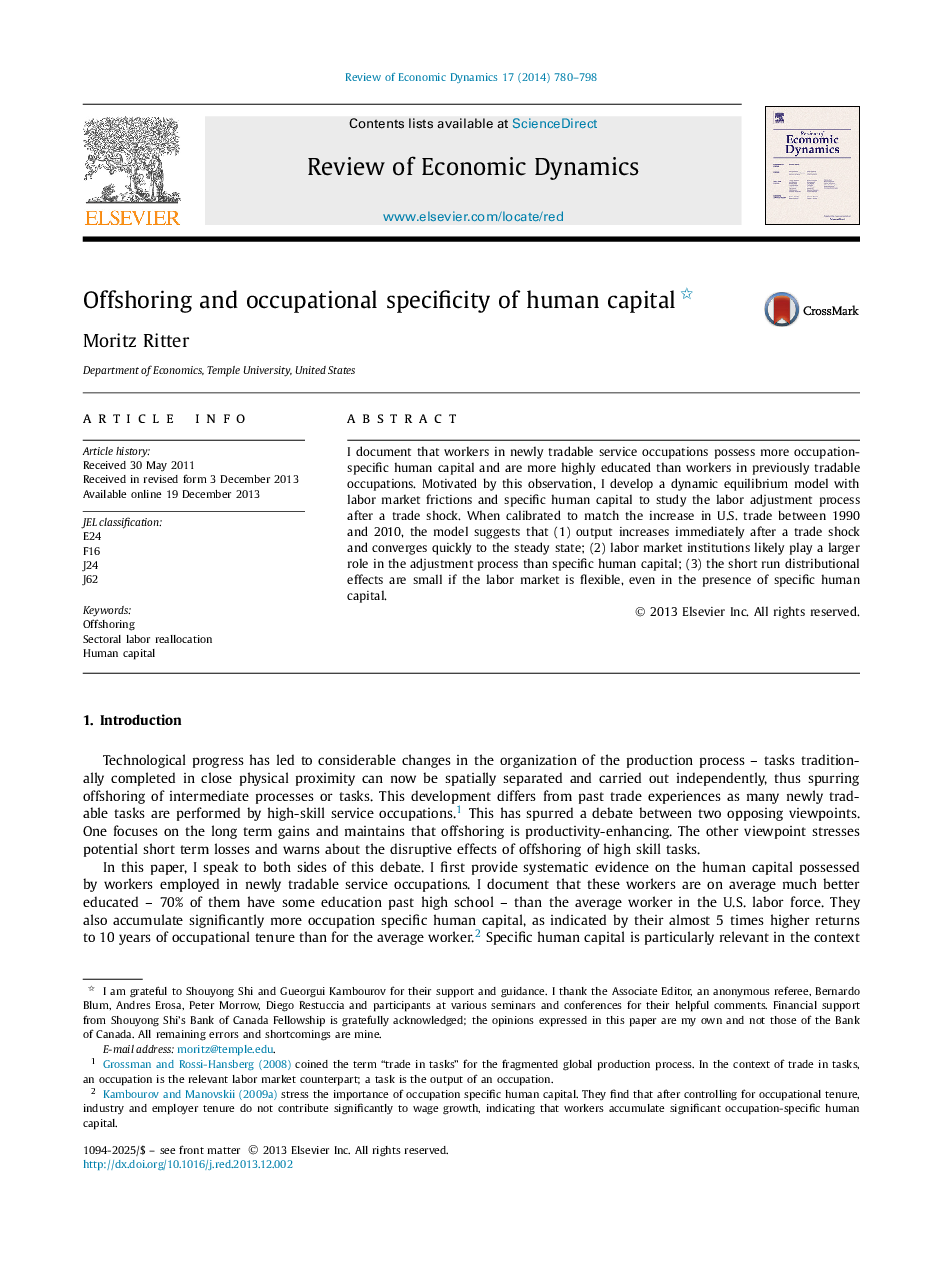| Article ID | Journal | Published Year | Pages | File Type |
|---|---|---|---|---|
| 986671 | Review of Economic Dynamics | 2014 | 19 Pages |
I document that workers in newly tradable service occupations possess more occupation-specific human capital and are more highly educated than workers in previously tradable occupations. Motivated by this observation, I develop a dynamic equilibrium model with labor market frictions and specific human capital to study the labor adjustment process after a trade shock. When calibrated to match the increase in U.S. trade between 1990 and 2010, the model suggests that (1) output increases immediately after a trade shock and converges quickly to the steady state; (2) labor market institutions likely play a larger role in the adjustment process than specific human capital; (3) the short run distributional effects are small if the labor market is flexible, even in the presence of specific human capital.
